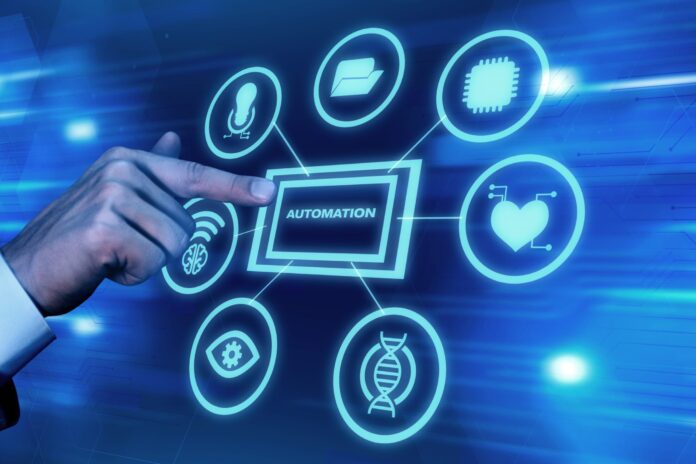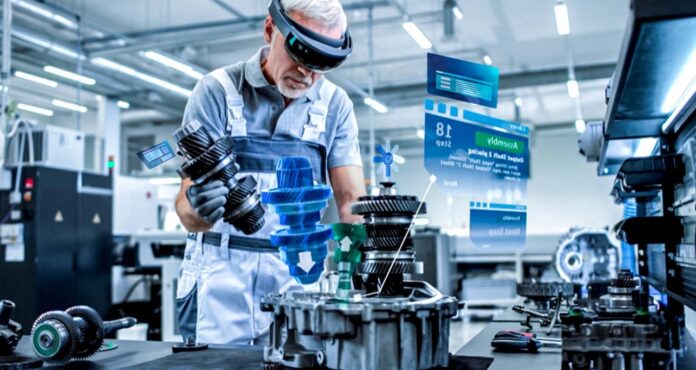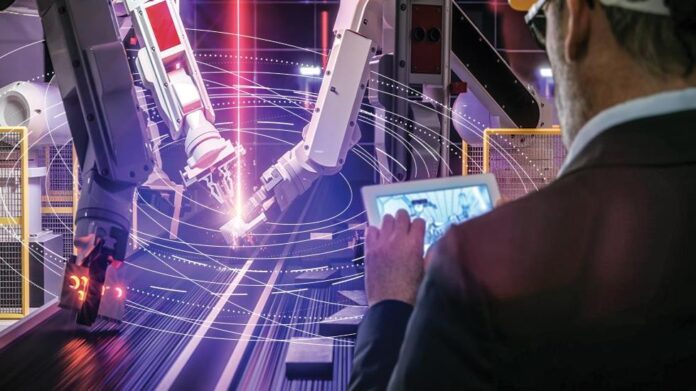Technology is progressing at a blistering pace these days. Cutting-edge innovations that once seemed like far-fetched sci-fi fantasies are rapidly becoming everyday realities. And they are radically transforming how we live, work, and do business.
Across major industries, advanced technologies are supercharging operations and unlocking entirely new potential. They’re streamlining processes, boosting productivity, and generating powerful data-driven insights.
Intelligent Automation Everywhere

Perhaps no trend is more prevalent than the rise of automation using artificial intelligence (AI) and machine learning capabilities. Intelligent automation is seeping into every corner of our world.
In factories and warehouses, robots and autonomous systems are managing more tasks with greater precision and efficiency than humans can achieve alone. From production lines to inventory management to shipping/receiving, no function is off limits to automation.
Behind the scenes at companies, AI algorithms automate routine back-office tasks like data entry, document processing, and financial reporting with incredible speed and accuracy. This frees up employees to focus on higher-value activities.
Even knowledge-based roles are not immune. AI is being infused into applications helping doctors diagnose conditions, attorneys conduct legal research, and data analysts spot patterns and anomalies in massive datasets. Anywhere repetitive cognitive labor is needed, machine intelligence can lend a hand.
Granted, concerns persist over AI systems making biased or flawed decisions affecting people’s lives. And while the technologies are impressive, they still require skilled humans providing oversight and judgment. Completely lights-out automation remains an unrealized ambition in most settings.
But there’s no denying AI’s prowess at automating routine tasks consistently and cost-efficiently at scales impossible for humans is proving utterly transformative for businesses of all sizes.
Capabilities of Connected Devices Keep Growing
What if machines and tools you use every day could share real-time data insights, predict issues before they happen, and even take corrective actions automatically? That’s exactly what new generations of smart, connected products are doing with the Internet of Things (IoT).
The IoT is about embedding sensors, wireless connectivity, and smarts into physical objects and machinery; everything from home appliances to industrial robots to vehicles. It allows these “things” to collect and share data about their operation, environment, usage patterns, and more.
In factories, computer-connected equipment gives total visibility into manufacturing processes, identifies inefficiencies and schedules predictive maintenance before breakdowns. For companies, this means less unplanned downtime and higher productivity.
The people over at Blues Wireless say that wireless IoT devices in healthcare settings like patient wearables and smart hospital rooms generate streams of health data to enable better monitoring and care delivery. Connected products and sensors in farming operations help optimize crop yields while minimizing water/pesticide usage.
The opportunities to gain operational insights and automate adjustments based on IoT data are endless. And as 5G networks unlock higher speeds and bandwidth, IoT’s potential grows.
Thanks to IoT tech getting cheaper and more accessible, large enterprises aren’t the only ones able to embrace this connected revolution. Smaller businesses can also benefit from easily deployed smart sensors and IoT analytics.
Extended Reality Alters Our Perceptions

Technology is even reshaping our physical and sensory experiences through extended reality (XR) applications that blend the real and virtual worlds in novel ways.
Virtual reality (VR) takes people beyond the “flatscreen” into immersive 3D interactive environments using specialized headsets and equipment. While gaming remains VR’s biggest splash, applications span industries like training simulations for surgery or aviation, virtual room modeling for interior designers, and even meditation/mindfulness experiences.
Augmented reality (AR) displays digital enhancements like text, 3D models, animations, or directions overlaid directly onto a user’s real-world view using smart glasses or mobile devices. It can enhance training, navigation, repairs and maintenance, retail, and tourism.
On factory floors, companies use AR instructions to guide workers through equipment inspections and assembly. Retailers experiment with virtual showrooms that let shoppers visualize clothes or furniture in their actual environments before buying.
As VR, AR, and mixed reality tools become even more realistic, portable, and affordable, we’ll likely see widespread adoption across business operations, customer experiences, and everyday tasks.
Real-Time Data Powers Decision-Making
Across all these emerging technologies runs a critical common thread: access to real-time operational data generated from countless smart, connected points. And this ability to gather, harmonize, and analyze big data from IoT sources, automation software and AI models is fundamentally changing decision-making.
With instant visibility into detailed metrics from manufacturing lines, supply chains, service operations, and customer-facing applications, companies no longer need to rely primarily on static reports and lagging indicators to gauge performance or identify issues.
Advanced analytics tools powered by machine learning can spot anomalies or patterns in all this incoming data that would be impossible for humans to detect. IoT predictive models help forecast maintenance needs, prevent failures, optimize schedules and routes, and much more.
This deluge of real-time intelligence empowers organizations to respond rapidly to changing conditions, fine-tune processes on the fly, and make proactive data-driven decisions that maximize efficiency and outcomes.
However, this avalanche of streaming data from so many sources can also complicate things if not properly integrated and managed. Simply having access to more data doesn’t necessarily lead to better decision-making. But the right data management, business intelligence software, and skilled analysts make all the difference.
For data-savvy companies, though, continuous real-time insights tailored to their needs can be an incredible competitive advantage. It allows business leaders, operational managers, data analysts, and frontline workers to be guided by facts and forecasts rather than instincts or historic trends.
Conclusion

From intelligent automation to interconnected devices and environments to AI-powered data insights, it’s an exhilarating time as new advanced tech solutions spread across all sectors. These innovations aren’t just enhancing individual processes but upending entire industries and business models.
Of course, with any disruptive change, we’ll face hurdles. But organizations willing to lead in adopting the right technologies stand to reap tremendous rewards of greater efficiency, agility, intelligence, and opportunity.
While we may debate the scale and pace of this ongoing revolution, one thing is certain: our technology-driven future will grow only more deeply connected, responsive, automated, and immersive. Organizations able to embrace these new realities stand to thrive in exciting ways.









